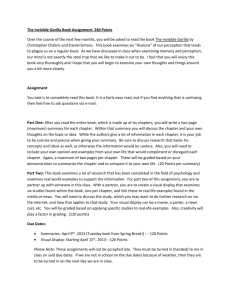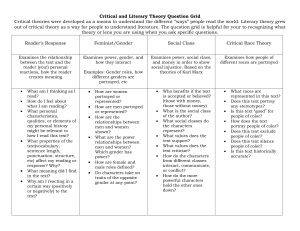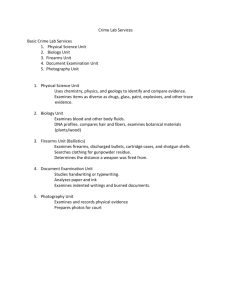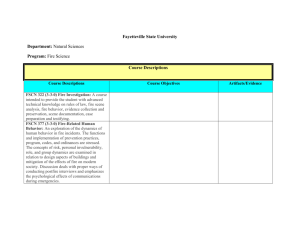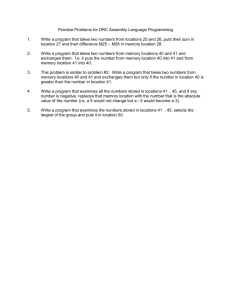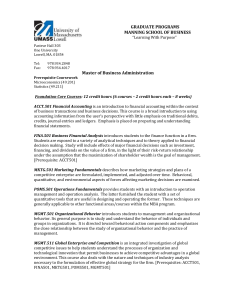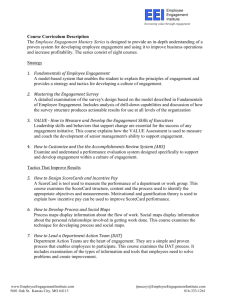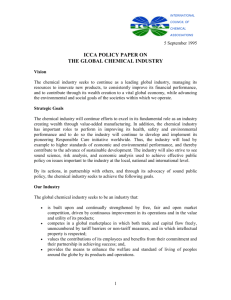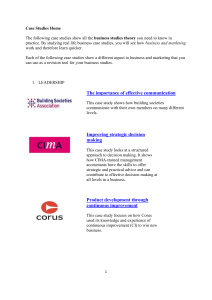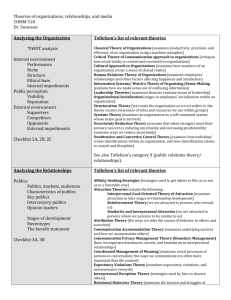Critical Approaches to Literature
advertisement
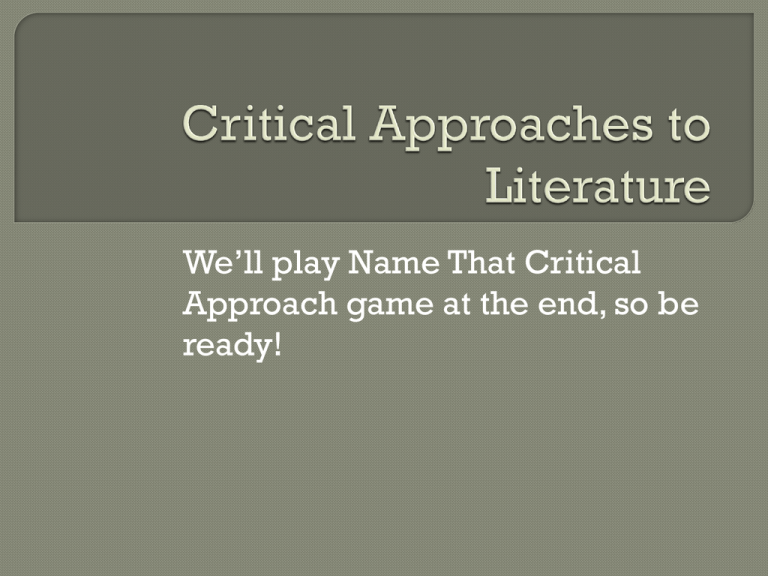
We’ll play Name That Critical Approach game at the end, so be ready! A way of talking about literature The lens through which we like to examine literature For example • People who believe that understanding the author’s life can help readers better understand his/her work, often use Biographical Criticism There are many critical approaches however here are some major ones to which we may be referring: 1. 2. 3. 4. 5. 6. 7. 8. 9. 10. Formalist Biographical Historical Psychological Mythological Sociological Gender Reader-Response Deconstructionist Cultural Studies Reader-based • Literature does not exist separate from those who read it • An individual’s background and feelings are part of how they read and interpret literature Text-based • Primarily look at the work itself, separate from context in which it was written or who wrote it Context-based • Examines the context in which a work was produced Strongly examines elements such as plot, character, style and tone, irony, symbol, etc. Believes that studying these elements is the most significant way to find meaning about the text Seeks to examine a work in isolation from • the reader, • the author, • the context in which it was written Do you think this approach is reader, text, or context based? Examines how details and people in author’s life have affected a work Might examine the events of writer’s life, (Hemingway’s reporting about the Spanish Civil war) and use them to better understand For Whom the Bell Tolls Might examine multiple drafts to try and decipher why a writer crafted the way she did Danger: often life stories can overwhelm the literature, making it difficult to understand or examine the work for its own merits Seeks to understand a literary work by investigating the social, cultural, and intellectual context that produced it Context includes author’s biography Less concerned with a work’s significance today than what it meant in its time How the time and place of a story’s creation affect its meaning Emphasizes the underlying meaning in literature in relationship to psychological components • Sexual symbols, dreams, repressed feelings, an individual character’s conscious and/or subconscious motives, etc. The critic might look at a character’s psychological make-up, sanity, etc. An interdisciplinary approach Often draws from anthropology, comparative religion, history, and psychology Explore literature through examination of common humanity Commonly discuss archetypes in literature: symbols or situations that evoke a universal response • Coming of age motif • The hero’s journey • Good v. evil as seen in light v. dark Examines literature in the cultural, economic, and political context in which is it written or received Looks at the relationship of the artist and society • How the social classes of characters influence their outcomes • The political or social statements a work offers Examines how sexual identity influences the creation and reception of literary works Began with the feminist movement Often looks at how text by examining “maleproduced” assumptions in works Men’s movement: seeks to examine ideas of masculinity May examine how women are stereotyped or what roles they play in literatureI nfluenced by sociology, psychology, and anthropology Attempts to describe what happens in the reader’s mind while reading a text Acknowledges that different readers come to a text with different backgrounds that will affect their interpretations Though it rejects the idea that there is a singular, correct interpretation, it notes that there are not an infinite number of interpretations No central methodology is used Interdisciplinary field Primary looks at the nature of social power as revealed in “texts” • Cereal boxes • Commercials • Literature Seeks to identify the overt and covert values reflected in a cultural practice See handout
